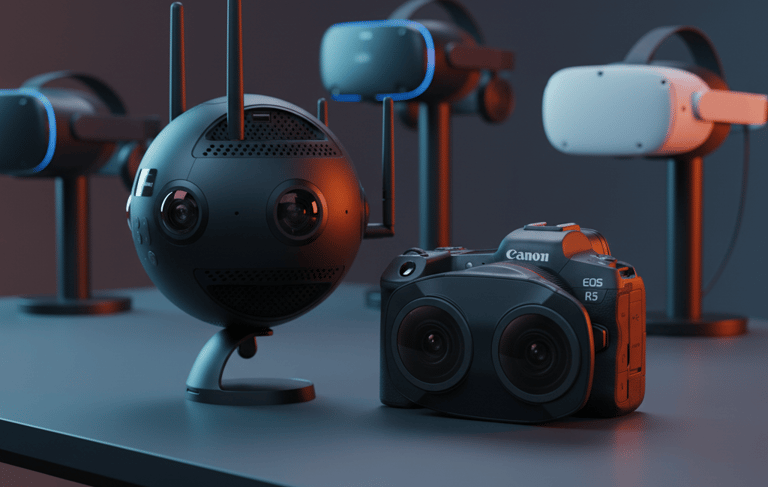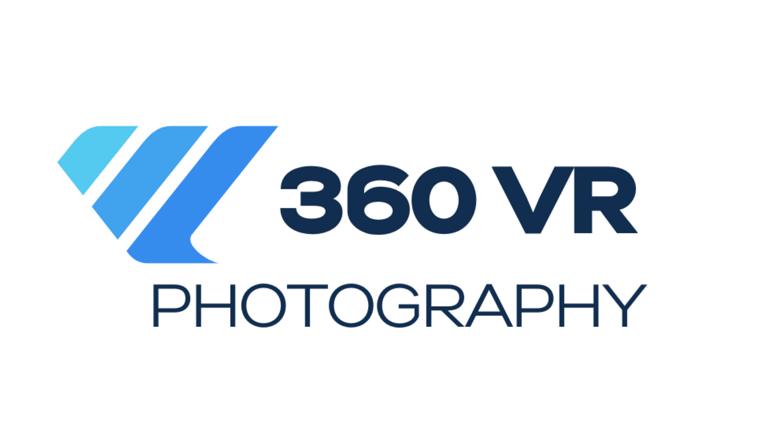Insta360 Pro 2 vs Canon RF 5.2mm 3D 180 VR: The Ultimate Camera Comparison for Professional VR Creators
Compare Insta360 Pro 2 and Canon 3D 180 VR lens to find the best camera for immersive content creation. Detailed breakdown of image quality, workflow, VR capabilities, pricing, and ideal use cases for filmmakers, studios, and VR production houses.
INSTA 360 PRO2 CAMERA GUIDE
Viral Gala
11/17/20254 min read


Insta360 Pro 2 vs Canon 3D 180 VR: The Ultimate Showdown for Professional VR Content
Virtual Reality is no longer a niche—it’s a powerful medium for storytelling, tourism, education, and brand experiences. When stepping into professional VR content creation, you face a critical choice: Do you need to capture the entire world (360°) or deliver hyper-realistic depth (180° 3D)?
We’re diving deep into two leading tools in this space: the Insta360 Pro 2 (a dedicated 360 camera) and the Canon RF 5.2mm f/2.8L Dual Fisheye 3D 180 VR (a specialist lens for the Canon R5/R6 Mark II). Both produce stunning results, but they serve fundamentally different creative visions.
Here is a breakdown of which tool you should choose for your next professional VR production.
🌐 Insta360 Pro 2 – Full 360° Capture
Primary Goal: Capture absolutely everything around the camera. The finished experience places the viewer literally inside the scene (full spherical immersion).
Technical Specs: Utilizes 6 lenses to deliver high-resolution 8K/12K 360° VR video.
Ideal Use Cases:
Virtual tours (real estate, resorts, temples)
Live 360 streaming events
Religious event recordings
Large-scale Metaverse experiences
🎬 Canon 3D 180 VR Lens – Focused Stereoscopic VR
Primary Goal: Replicate natural human vision with realistic 3D depth (stereoscopic). The viewer is focused intently on the forward-facing content.
Technical Specs: The dual fisheye lens captures crisp 8K 180° 3D content.
Note: This lens requires a compatible camera body, such as the Canon R5 or R6 Mark II.
Ideal Use Cases:
Cinematic VR films and documentaries
Intimate interviews and close-up human interactions
Product demonstrations requiring realistic depth
High-quality YouTube VR content and compelling storytelling
2. Image Quality & Fidelity
Canon 3D 180 (The Cinematic Champion)
Image Quality Highlight: Utilizes the Canon R5's large sensor, resulting in significantly sharper images and superior low-light performance compared to most 360-degree cameras.
Stereoscopic Depth: Offers true 3D stereoscopic depth that makes close-up interactions feel tangible and real.
Color Science: Benefits from Canon’s exceptional color science, making it a favorite for filmmakers who prioritize cinematic grading.
Insta360 Pro 2 (The Immersive Workhorse)
Resolution: Shoots high-resolution 8K 3D 360° (up to 12K for photos).
Dynamic Range: Features excellent dynamic range, performing well in demanding outdoor and event lighting.
Best Viewed On: Looks outstanding in modern, high-resolution headsets like the Meta Quest 3 and Apple Vision Pro.
3. Workflow, Post-Production, and Time Savings
This is arguably the biggest deciding factor for professional use!
Insta360 Pro 2:
Requires Stitching: The footage from the 6 lenses must be processed and "stitched" together using software like Insta360 Stitcher or Mistika VR.
Time Commitment: The stitching process is time-consuming and often requires careful attention to avoid visible seams, though the final 360-degree result is fully immersive.
Community Insight: For a deeper look into the practical challenges and solutions of 360-degree stitching, check out A Reddit discussion on the Insta360 Pro 2.
Canon 3D 180 VR:
No Stitching: This is the massive advantage. Since the two fisheye images are recorded side-by-side onto a single sensor, there is no complex stitching required.
Streamlined Process: Uses the simple, reliable Canon VR Utility for conversion, leading to a much faster workflow optimized for quick output to platforms like YouTube VR.
User Insight: For real-world experience, read a user's detailed report on
4. Pricing (Indian Market Estimate)
Insta360 Pro 2:
Approx. ₹4,00,000 – ₹4,50,000.
Verdict: It is a complete, self-contained VR setup.
Canon 3D 180 Lens:
Approx. ₹2,00,000 (Lens Only).
Total Cost: Requires a Canon R5 body (approx. ₹2,80,000) or R6 Mark II.
Verdict: It is an add-on lens for high-end filmmakers who already own or plan to purchase a compatible R-series camera.
5. Conclusion: Which One is Right for You?
The choice boils down to your project’s requirements and your production philosophy.
Choose the Insta360 Pro 2 if you need:
Full Spatial Coverage (360°): Essential for documentation where the viewer must be able to look behind them (e.g., virtual tours, religious events, live performances).
Virtual Tourism: The camera needs to be placed and left to capture the entire environment.
All-in-One Solution: You prefer a dedicated VR camera system.
Choose the Canon 3D 180 VR if you prioritize:
Cinematic Quality: Best-in-class sharpness, depth, and color science for premium, forward-facing content.
Close-Up Interactions: The realistic 3D depth is brilliant for interviews, product demos, and human interactions.
Speed and Efficiency: You need a faster, hassle-free editing workflow without complex stitching.
The Filmmaker Touch: You are already invested in the Canon ecosystem and prefer the control of a large sensor camera.
Suggested Video Reference
To see the difference in quality and depth firsthand, we highly recommend watching a side-by-side comparison in a VR headset:
(Note: This video compares the Canon lens to other VR180 cameras and the Insta360 EVO, showcasing the superior fidelity of the 180° format when using a high-end setup like Canon’s.)
❓ Frequently Asked Questions (FAQ)
Q: Do I need a VR headset to view the content?
A: While both 360° and 180° content can be viewed on platforms like YouTube in a flat browser window, you absolutely need a dedicated VR headset (such as Meta Quest or Apple Vision Pro) to experience the stereoscopic 3D depth and achieve true, meaningful immersion.
Q: Can the Canon 3D 180 lens shoot 360°?
A: No, it cannot. The Canon RF 5.2mm lens is specifically designed for 180° capture. Its strength lies in focusing all the camera's resolution on a forward-facing view to deliver maximum quality and depth, rather than covering the full sphere.
Q: Why is the Canon workflow faster?
A: The main reason is the elimination of stitching. Since the two images are perfectly aligned and captured simultaneously onto a single camera sensor, there is no need for time-consuming and complex software processing to join multiple video feeds. This removes the most labor-intensive step in traditional 360 VR post-production.
Would you like me to revisit any other section of the blog post, such as the Pricing or Best Use Cases, and convert them to bullet points as well?
Connect with Us for Your VR Projects
This article was brought to you by Viral Gala of 360 vr photography.
If you are looking for professional consultation or services in the VR content space, please feel free to reach out.
Company Name: 360 vr photography
Contact Name: Viral Gala
Contact Number: 9920322366
Websites: 360vrphotography.com and 360vrphotography.in



Experience
Engaging virtual tours for real estate and events.
Innovative
info@360vrphotography.in
+91 9920322366
